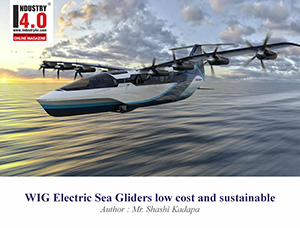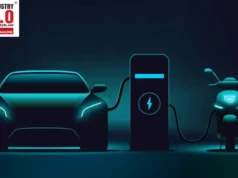RAMinator Monster Truck, an Aweaspiring Machine
I came across the beauty Raminator Monster Truck at the Oklahoma City Fair. From a distance, it appeared like a movie prop. Then I heard the growl as it started, and then the roar when it revved up. The ground trembled, leaves fell from the trees, water puddles vibrated, and we were in awe at the height of automotive tech advances.
The Raminator is a custom monster truck built by Tam and Mark Hall of Hall Bros Racing, Thomasboro, Illinois. The model is one of the series of trucks made by Hall Bros. The series includes Heavy Metal (1986), Big Boss (1992), and Executioner (1992), all done in collaboration with GMC and Chevrolet. In 2002, Dodge offered sponsorship to build the Raminator.

Figure 1. Me and the Dodge Raminator at Oklahoma City Fair, OKC
The Raminator has consistently won awards USHRA, Monster Jam, ProMT, PENDA series championship, Monster Nationals, Driver of the Year, and many more. Later, Dodge withdrew the sponsorship since it wanted to focus on smaller trucks. As of now, Hall Bros manages the Raminator.
What are specifications of the Raminator?
Monster trucks are huge, and the Raminator is one of the hugest. Table 1 gives specifications of the Raminator.
Table 1. Specifications of Raminator Truck

The biggest monster truck is Big Foot, used mainly for shows, crushing other vehicles. However, the Raminator gets the attention due to its wins, aura, top speed, and power. Recently, Guiness Book of Records certified that on a test track, Raminator reached a top speed of 99.1 mph, making it the fastest monster truck.
The Design of a Monster Truck is complex since the behemoth needs to have speed, handling, and power. Some important components of the truck are reviewed.
Hemi Engine
Raminator has a hemi engine, and this is a V8, supercharged, custom engine from Chevrolet rebuilt by Mopar. The combustion chamber is designed in the form of a hemisphere to increase the efficiency and power. They may be built as V8 or even V12 configurations. Chevrolet, Noonan, Shafiroff, Kaase Racing, Proline Engines, and Brad Anderson build these engines.
The hemispherical or dome-shaped combustion chamber inside the cylinder head has the sparkplug in the center of the chamber. This placement decreases the burn distance and flame travel of the fuel-air mix, leading to improved combustion. Over the century since it was developed in 1901, leading firms have used the engine as a base.
Firms such as Peugeot, Fiat, Alfa Romeo, Daimler, Riley, Corvette, Ford flathead V8, Jaguar XK, Chrysler C 300, Lancia, Dodge Coronet, Plymouth Belvedere, Dodge Charger, and Plymouth Satellite, and others have used the model. The engine was discontinued in street cars due to disadvantages such as higher costs, heavier weight, ability to fit only two valves per head.
Tubular Chassis
Raminator and other monster trucks have a tube steel frame. The tubes are made from steel grades of ASTM A1020 DOM, 4130 Chromium-Molybdenum Steel. The metallurgical properties of these steels make them ideal for the high impact loads, shear stress that the frame undergoes.
For the chassis, the designer used two tubes, with the smaller sliding into the bigger to provide additional strength, especially at joints. A monster truck that performs stunt jumps over bumps, other vehicles at shows, and jumps more than 30 feet. The velocity at launch would be 40+ mph, glides at 32+ mph, and comes down at 44+ mph. So, a truck of 10,000 lbs would land with an 8-g, 25,000 pounds, and the chassis must be strong, light, and flexible.
1020 DOM or drawn over mandrel steel is cold drawing that allows maintaining close tolerance, a smooth finish, and a consistent wall thickness. The steel has a composition of Carbon 0.17 to 0.23 percent, Iron at 99.53 percent, Manganese at 0.6 percent, Phosphorus of 0.04 percent, and Sulphur of 0.05 percent.
The composition gives the steel and tensile strength of 602 Mega Pascal, yield strength of 512 Mega Pascal, Elongation of 15 percent, and 90 Brinell hardness. The four Link bars that connect to the suspension are made of 4130 chromium-molybdenum tubes. Overall, the whole frame is light and can take the massive loads.
Shock absorbers
The load on a monster truck when it drives, jumps, and corners is borne by the shock absorbers. The shock absorbers and suspension need at least 28 inches of travel. This travel is about four times that of the leaf-springs. The shock absorbers have a three-inch outer diameter steel tube with a quarter-inch wall thickness hydraulic wall tube.
The outer surface has a finned or ribbed construction to remove the intense heat. The tubes have Nitrogen gas at 400 psi and under compression; the internal pressure is 2100 psi, to prevent tube collapse. The N gas compresses when the truck hits a ramp, and then springs back, adding to the height to which the truck flies.

Dodge Raminator (Created by Shashi Kadapa with Adobe Firefly)
Gear Train, transmission, and axle
The gear train is automatic, with reverse rotation, Transfer Case Sniper Gear box with FTI performance, 1.00 Bull Gear Ratio. The final dive ratio of 0.50 to 1.70. Captive seals are provided to prevent mud from entering. Other types are Powerglide, Turbo 400, TorqueFLite 727, or the Ford C6 transmission.
The axle is of ZF make, and the total reduction provided is 16.5:1, planetary reduction of 6.3:1, and the ring and pinion or rear end has a 2.6:1 reduction. The large reduction allows the members, such as drive shafts, ring and pinion, and axles, to bear less stress.
The Weight distribution ratio of the sprung and unsprung weights is important. Sprung weight is the load on the suspension, and the unsprung load is that which does not rest on the suspension. Unlike passenger cars that have a 95% ratio, monster trucks have a 50:50 ratio. This distribution allows the maximum weight on the wheel and so the truck remains on the ground.
Tires
BKT, Firestone, and other brands make monster truck tires. These are just huge, about 66 by 43 by 25 in, weighing more than 440 lbs at 1.6 bar pressure. While such tires require large and heavy rims, the weight will be very high. Therefore, the rims are made of 25-inch tubes. During a jump, when the vehicle lands, the tires almost flatten, without crushing the rim.
A bigger bead on the wheel is fabricated from the tube. The width of the rim is kept at 32 inches, and a crown is built. Stock tires are modified by turning on a lathe, and three inches of tread is removed. The remaining lugs are shaved by hand, and about 450 lbs of rubber is removed. The reason is weight, and when 10 Lbs is removed from the tire, about 100 lbs is reduced from the chassis, increasing the speed.
Seating
The seat is critical, since an improperly designed seat will tear loose and send the driver flying. The seat is layered with high-impact foam to reduce shocks, and a 7-point harness keeps the driver seated. It is bolted to the chassis and reduces the 15 g decelerations to about 4.5 g to the driver. This flying and dropping happens 25-40 times in a circuit.
Final Thoughts
At the OKC fair, the pit crew was kind enough to give me a short ride. It was a plain track in a field, but it felt like riding an angry but controlled elephant. A small ‘bump’ was built on which the truck rode, and it felt like I was dropping from the sky, with the ground swimming and wavering.
I have seen many mean and powerful racing cars, even touched a few; they were awesome. With the Raminator, it felt like touching a resting bull that would rise and rage. A thought struck me, if the truck decided to run wild, there was nothing in the city that could stop it.
Legal Disclaimer: The views, thoughts and opinions expressed in this article are those of the author and do not reflect the views or positions of INDUSTRY 4.0. The content is provided by the author as-is and is published solely for informational or educational purposes.
INDUSTRY 4.0 does not guarantee the accuracy, completeness or usefulness of any information presented and is not liable for any errors, omissions or outcomes resulting from the use of this information. The responsibility for the content lies entirely with the author.
Banner image credit : Dodge Raminator (Created by Shashi Kadapa with Adobe Firefly)
About the author :
 Mr. Shashi Kadapa
Mr. Shashi Kadapa
Based in Pune, India, Mr. Shashi Kadapa is an engineer, MBA and has worked with leading IT and manufacturing firms. A multi-hyphenate, he has roles as a technical writer, and SEO content writer with a focus on IT and tech topics.
Creative fiction is his passion, and he serves as the managing editor of ActiveMuse, a journal of literature. His stories across multiple genres are published in more than 45 US and UK anthologies.
Mr. Shashi Kadapa can be contacted at :
E-mail | LinkedIn | Blog | Mobile : +91 7387492371
Also read Mr. Shashi Kadapa earlier article:
















